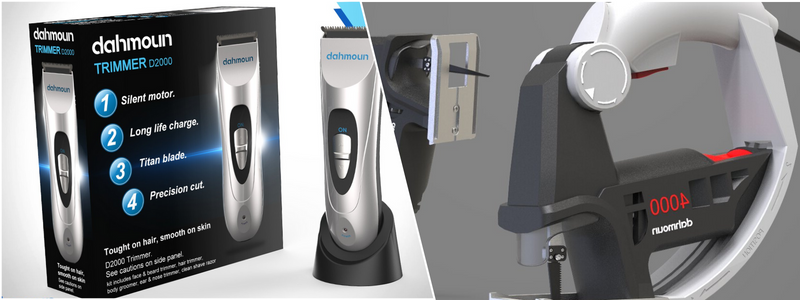Do you want to know how to calculate your company’s 3D rendering project expenses, pricing, and fees?
You’d probably have to deal with this at one point or another, whether you have your in-house team or outsource your 3D rendering projects. When you know precisely what you’ll pay for, you can save more money on your following projects. In this article, you’ll learn the main factors that affect the costs of 3D rendering projects so you can completely control them soon.
 Table of contents
Table of contents
- Key factors that affect the pricing of 3D rendering projects
- Per scene/project and image pricing
- Price points for 3D rendering projects
- Introductory pricing for 3D rendering services: $300 to $400
- Mid-level pricing for 3D rendering services: $400 to $3,000
- High-end pricing for 3D rendering services: $3,000 to over $14,000
- How Cad Crowd can help
Key factors that affect the pricing of 3D rendering projects
Labor required and rendering time are the two main factors that directly impact the pricing of a 3D rendering project.
1. Labor required
The labor is the primary cost affecting 3D rendering. Three professionals are often involved in 3D rendering projects: the post-processing or Photoshop artist, the 3D artist, and the project manager. Of these three, the 3D artist plays the most crucial role and is also the main focus of cost estimation.
A 3D render should do the following to come up with a render:
- Understand the vision and plans of the client
- Use 3D software to create the model
- Texture the model
- Set up lighting
- Set up camera
The labor involved in 3D renderings is more complex than most people think. Experienced 3D artists can develop extremely detailed scenes quickly using the tools available. Scenes that seem simple, on the other hand, might require longer development time. For instance, an accurate and large aerial view of the forest can be accomplished quickly with the help of automated processes and topographical data. Modeling one equipment piece, like an electronic device with complicated wiring and circuit boards based on exacting standards, could take days and even days.
More often than not, using items from existing libraries such as finishes, furniture, cars, and people can expedite the process. The primary factors that affect the cost of labor are the number of distinct elements needed and the level of detail involved in the project. After completing a 3D render, most companies hire a graphic designer or Photoshop artist to perform touch-ups on the image. This post-processing can be either a major or minor part of the process. Other studios can render essential scenes and do most details in Photoshop. However, the best service providers take a more minimal post-processing approach. Although studios can settle without post-processing, color touch-ups or tweaking are often necessary.
RELATED: 3D rendering costs & 3D visualization prices for firms
2. Rendering time

Regarding rendering time, this pertains to the time required for computers to generate images. This rendering time is directly linked to the level of detail and realism the image calls for. However, different methods exist to add details without significantly increasing the rendering time. Consumers, however, don’t have to worry a lot about rendering time as this is the rendering company’s job in the first place. Depending on the specific rendering software used, there are times when the number of light sources substantially affects rendering times. The result is a faster rendering of exterior scenes.
Another factor is the scene’s level of detail, often called poly-count, which indicates the number of polygons used to model the scene. Foreground vegetation is a common element that substantially increases detail and rendering time. However, spites or billboards can be used to optimize background vegetation. Curved surfaces also need more detail, which can lengthen rendering times further.
Providing specific feedback and comprehensive plans is the most effective way to reduce the rendering time. Every revision requires re-rendering of all or some parts of the image so that fewer revisions will lead to reduced overall rendering time. This reduced number of revisions helps save money down the road.
The resolution used is also an essential factor in the total rendering time. It becomes more critical during the development of animations, although it may still impact the rendering time for the still images. With the changes in modern rendering software and continuous computer hardware improvements, the rendering time of still photos is no longer a substantial factor in the pricing involved. However, rendering time still plays an essential role in animation production costs.
RELATED: Understanding 11 factors that impact 3D rendering costs and services for companies
Per scene/project and image pricing

There are two common pricing strategies that your company can consider: per image and scene/project pricing.
- Per scene/project pricing
This particular type of pricing generally requires clients to provide project details to your company. In return, you will send them a customized quote according to their needs. The pricing model is a common choice for large-scale 3D rendering projects that involve various elements like multiple rendered images, 3D floor plans, animation, and web design.
- Per-image pricing
In the per-image pricing strategy, clients are charged either a fixed price for every rendered image or a scalable price according to the number of renders required. This kind of pricing model is ideal for smaller projects. For instance, if the client needs a basic exterior rendering of a residential house, there are no significant differences among projects. This allows your company to charge a flat rate for different types of renders. Most of the time, the cost of rendering a single image is higher per image than buying several photos. This is because the preliminary setup for a single rendering could be intensive. After completing this setup, the process of rendering is more manageable.
RELATED: Exterior 3D rendering costs: 13 areas impacting rates & budget
Price points for 3D rendering projects
As 3D rendering technology becomes available and accessible in different parts of the world, 3D rendering services are expected to differ drastically. Most architectural rendering companies in less developed nations can provide cheap choices for the development of 3D images by exploiting cheap labor and more relaxed regulations. Unfortunately, working with overseas 3D companies may lead to stylistic differences, time zone concerns, and language barriers. The final quality is generally lower.
Now, it doesn’t mean you can’t find skilled 3D artists in every part of the world. However, most companies that can only provide bottom-of-the-barrel pricing are more focused on quantity than quality. The only time you can get architectural images made by companies that offer services from as low as $99 to $200 per image must be reserved for cases where the project’s purpose is to conceptualize designs and ideas for personal projects.
Many people have tried their luck by opting for low-end pricing options only to realize that they just got what they paid for, making them end up coming to more established companies. The cheapest pricing will only be your best choice if the main concern is the budget for the project and there are no issues regarding the personal time and the final quality spent to micromanage the project.

Introductory pricing for 3D rendering services: $300 to $400
This price range is a step up from the pricing bracket at the bottom of the barrel because it often provides a more professional experience. Many projects within the set price range are outsourced. However, these should still be managed by a local professional or someone with outstanding language skills.
Mid-level pricing for 3D rendering services: $400 to $3,000
Mid-level pricing is the most common and popular choice for designers, real estate agents, architects, and developers working on medium to larger-scale rendering projects and high-end homes. Average customers may need help differentiating between a great render and an alright render without direct comparison. The most straightforward way to judge the quality of a render is to visit a reliable website and compare the renderings of your direct competitors with your company. You should note that the images from your company are better or even on par with those of your competitors.
RELATED: Learn about 3D product rendering costs, rates, and pricing for 3D visualization services?
High-end pricing for 3D rendering services: $3,000 to over $14,000
Bigger and more established corporations that focus on value more than anything else but still require top-notch quality opt for high-end 3D rendering pricing. These renders are not meant for everyday clients since most budgets don’t make room for such an extravagant cost. However, perception and branding are huge in marketing super malls or high-rise developments. Tens of thousands of dollars on a project that costs $100 million are nothing but a mere drop in the bucket, even more so when the images help ensure hundreds of pre-sales or make a big difference between rejection and approval.
How Cad Crowd can help
Now that you know how to calculate the fees, pricing, and expenses for 3D rendering projects, browse Cad Crowd to find the right professionals to help you meet your budget and timelines. Get a free quote today.
